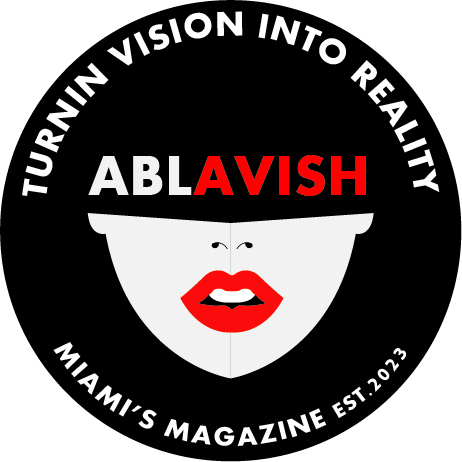The Controversy Surrounding Walmart’s $80 Birkin Bag Lookalike, the ‘Wirkin’

Is It Still a Status Symbol If You Can Actually Afford It?
The world of luxury fashion has always been a complex interplay of desire, exclusivity, and social status. Recently, a new player has entered this arena, igniting a heated debate about accessibility and the ethics of imitation. The launch of an inexpensive knockoff of the iconic Birkin bag—a handbag synonymous with wealth and status—has raised questions about what it means to own a luxury item in today’s society.
The Birkin Bag: A Symbol of Exclusivity
The Birkin bag, crafted by the prestigious French brand Hermès, is not just a handbag; it is a cultural phenomenon. With prices soaring above $400,000, the Birkin has become a globally recognized emblem of status and wealth. Its allure lies not only in its craftsmanship but also in its scarcity. The bags are handcrafted by skilled artisans in France, and the brand employs a quota system that limits the number of bags available for purchase each year. This exclusivity has created a years-long waiting list, further enhancing the bag’s desirability.
The Rise of the Wirkin
Enter the Wirkin, a budget-friendly alternative that has taken social media by storm. Priced at approximately $80, this knockoff has been marketed as a "Birkin-style bag" and has sparked a frenzy among consumers looking for a taste of luxury without the hefty price tag. Third-party sellers on Walmart’s website have listed these bags, which closely resemble the original Birkin in design, including similar handles and buckles. Social media users have embraced the Wirkin, dubbing it the "working-class Birkin" or "Walmès," celebrating its accessibility.
In a viral TikTok video, user @StyledByKristi unboxes her new Wirkin, exclaiming, "Eighty bucks and you can pretend that you got a Birkin." This sentiment resonates with many who see the bag as a way to enter the exclusive world of luxury fashion without breaking the bank.
The Debate: Accessibility vs. Authenticity
While many celebrate the Wirkin as a democratization of luxury, others express concern about the potential dilution of the Birkin’s status. Critics argue that the proliferation of affordable alternatives could undermine the exclusivity that makes the Birkin so desirable. Longtime Hermès collector Angelique Chamberlain emphasizes that owning a Birkin is not merely about the financial investment; it involves a deep appreciation for the brand’s heritage and craftsmanship.
The controversy also touches on the ethics of imitation. Unlike traditional counterfeits, which aim to deceive consumers, the Wirkin is marketed transparently as a dupe. Legal experts note that dupes exist in a legal gray area, focusing on aesthetic similarities rather than branding, allowing companies to avoid intellectual property infringement. However, this raises questions about the implications for the luxury market and the value of authentic craftsmanship.
The Cultural Shift in Luxury Fashion
The emergence of the Wirkin reflects a broader cultural shift in how luxury is perceived. As social media platforms amplify voices that challenge traditional notions of exclusivity, many consumers are advocating for inclusivity in fashion. TikToker @LastingLooks articulates this sentiment, stating, "It levels the playing field." The Wirkin allows individuals who may not have access to high-end luxury to enjoy a semblance of that lifestyle.
Bethenny Frankel, a reality TV star, further emphasizes this shift, claiming that the Wirkin has "broken the glass ceiling" of luxury spaces. She argues that the rise of affordable alternatives signifies a rebellion against elitism in fashion, allowing a broader audience to participate in luxury culture.
The Future of Luxury and Status Symbols
As the debate continues, the question remains: Is a luxury item still a status symbol if it is accessible to the masses? The answer may lie in the evolving definition of luxury itself. Traditionally, luxury has been associated with exclusivity and high price points. However, as brands adapt to changing consumer preferences, the lines between luxury and accessibility are becoming increasingly blurred.
The Birkin bag’s status as a symbol of wealth and exclusivity may be challenged by the rise of alternatives like the Wirkin. Yet, this shift could also lead to a redefinition of what it means to be "luxurious." Perhaps luxury is no longer solely about price but also about the experience, craftsmanship, and the stories behind the products we choose to carry.
Conclusion
The launch of the Wirkin has sparked a significant conversation about fashion accessibility, imitation ethics, and the evolving nature of luxury. As consumers navigate this new landscape, they are forced to reconsider what it means to own a status symbol in a world where affordability and accessibility are increasingly prioritized. Whether the Birkin will retain its status as the ultimate luxury item remains to be seen, but one thing is clear: the conversation around luxury fashion is far from over.

Latest News
For Sale! 2016 Sea Ray 350 Sundancer – $180,000
Reel Deal Yacht is pleased to feature a meticulously maintained 2016 Sea...
Local Sports Update – Hometown News Now
Sports Roundup: Tuesday’s Thrilling Scores In the world of sports, Tuesday brought...
Judiciary Democrats Launch Inquiry into Trump’s Qatari Plane Deal, Request Information from Trump DOJ and White House Counsel
Committee Democrats Demand Legal Justification for Trump’s Acceptance of Qatari "Flying Palace"...
Why India’s Ultra-HNIs Are Emotionally Investing in Art, NFTs, and Jewelry
The New Face of Wealth: Collectibles as Symbols of Identity and Legacy...
7 Exciting Summer Getaways from the UK Without Flying
Discovering Summer Getaways Without the Airport Hassle For many, the thought of...













